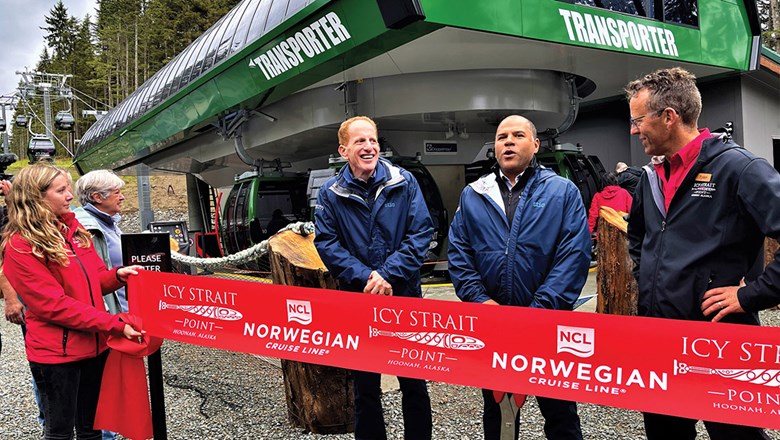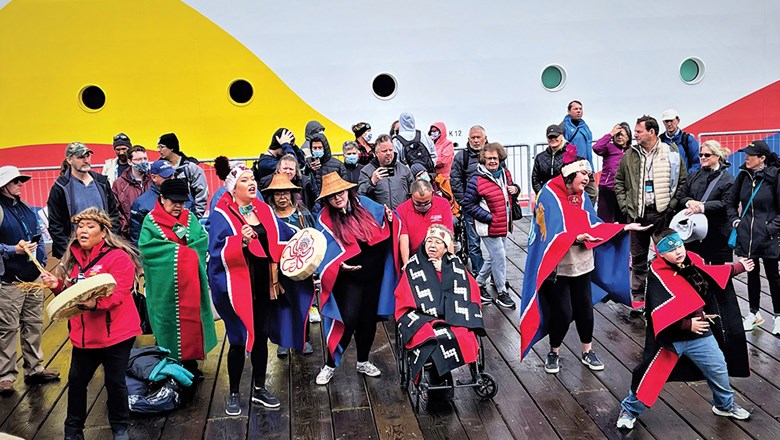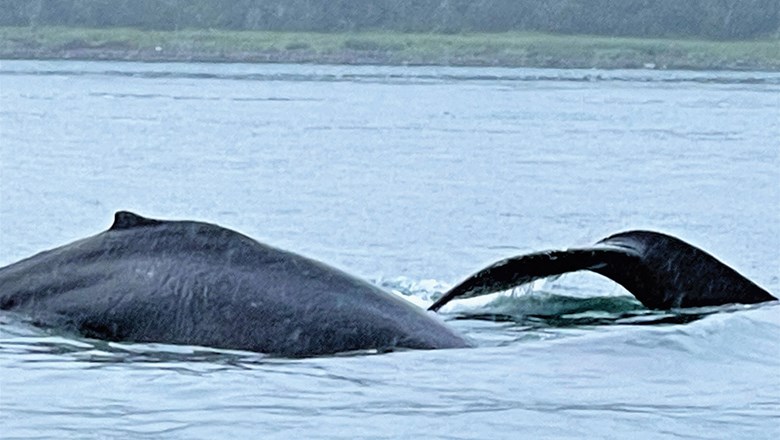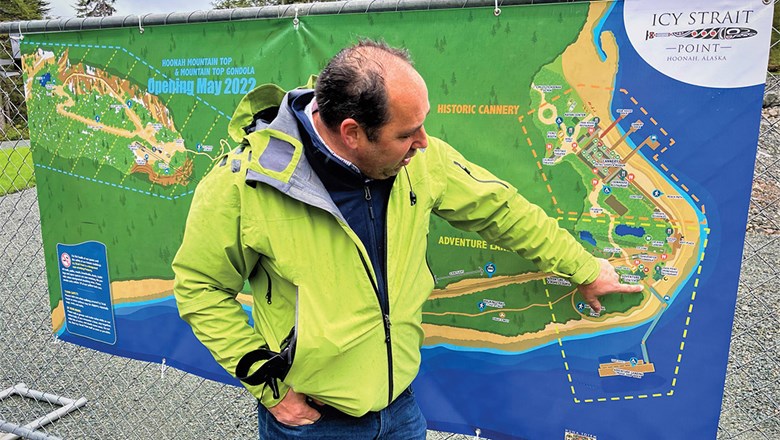Icy Strait Point (finally) welcomes back NCL cruisers
2021-09-19Icy Strait Point, a private cruise ship destination in Alaska’s Inside Passage, is in many ways a microcosm of how the travel industry, and cruising in particular, can successfully support communities while importing outside influences, blend authenticity with marketing and combine history with entertainment.
Although several cruise lines call at Icy Strait Point, Norwegian Cruise Line Holdings (NCLH) played a critical role in its recent developments.
In 2018, it gave a commitment to bring enough passengers to enable the 1,450 native Tlingit shareholders of the Huna Totem Corp. who own the land (and 24,000 adjacent acres) to secure an $80 million loan. The money went to help develop New Wilderness Landing, an NCLH-priority dock; construct an elevated gondola transporter between the dock and attractions a half mile away; and build lift systems to speed riders up Hoonah Mountain and to its ZipRider zipline.
Guests who boarded the Norwegian Encore in Seattle last month on the first Norwegian Cruise Line (NCL) sailing from a U.S. port since the pandemic visited Icy Strait Point. It was the first NCL ship to call at the destination in 692 days, berthing at New Wilderness Landing a year after the dock was originally to begin operations.

There was pomp and ceremony to welcome the Encore, with traditional Huna dancing and singing. NCL president Harry Sommer was there, and in what can only be perceived as a good omen, a surface-level band of rainbow appeared behind him and his family as they posed for photos.

The NCLH-enabled expansion of the infrastructure on Icy Strait Point is part of a larger narrative about a native community’s long-term economic planning. Until a marketer came up with the name Icy Strait Point in the early 21st century, the land was known in the native Tlingit language as Duck Point.
And despite what the new name suggests, there hasn’t reliably been year-round ice in the area since the 1700s. “In winter, it’s warmer than New York City,” said Icy Strait Point’s vice president of operations, Tyler Hickman.
The development opened in a less grand version in 2003. Initially, one of its big selling points was that it would host only one ship at a time.
Its offerings — and desire to increase capacity — have expanded steadily since.

Visitors today have options. In addition to learning about Tlingit/Huna culture against the backdrop of a beautiful mountain setting, there are nature-related excursions (including whale watching), entertaining interpretations of history (a restored salmon cannery) and the adrenaline-pumping zipline, the only one in the world where six people can launch side by side, reaching 60 mph in less than two seconds as they begin a milelong, 1,400-foot drop in a single-stage descent.
(When the zipline opened in 2007, it claimed to be the longest in the world but has since been bested by one in Puerto Rico.)
Guests currently ascend Hoonah Mountain to its launch platform on a 45-minute bus ride, limiting usage to approximately 200 riders per day. When the lift system currently under construction to the platform and the mountaintop is completed, it will be able to transport up to 2,800 people an hour. (The lifts were also originally scheduled to be operational in 2020, as well, but the pandemic delayed construction there, too. It’s now scheduled to debut in May 2022.)

Mickey Richardson, the site’s marketing director, said the Huna community of the Tlingit tribe mostly views Icy Strait Point as an opportunity to share their story with guests from around the world.
“Some native communities have ambiguous feelings about cruising,” Richardson said. “Not the Huna.”
Courtesy of Travel Weekly


